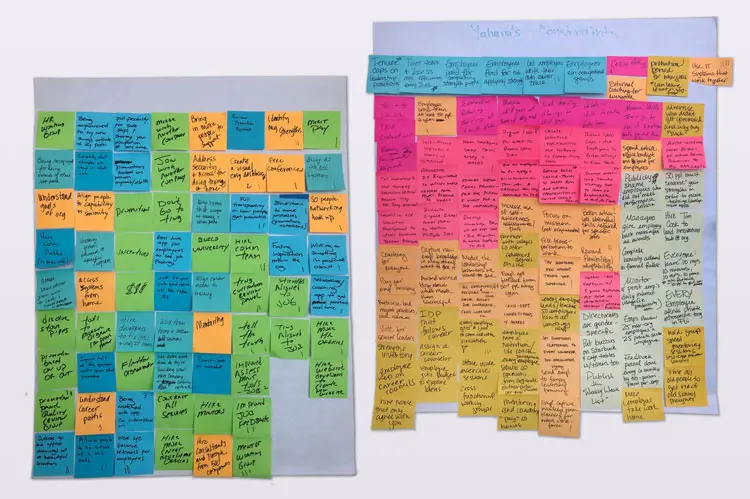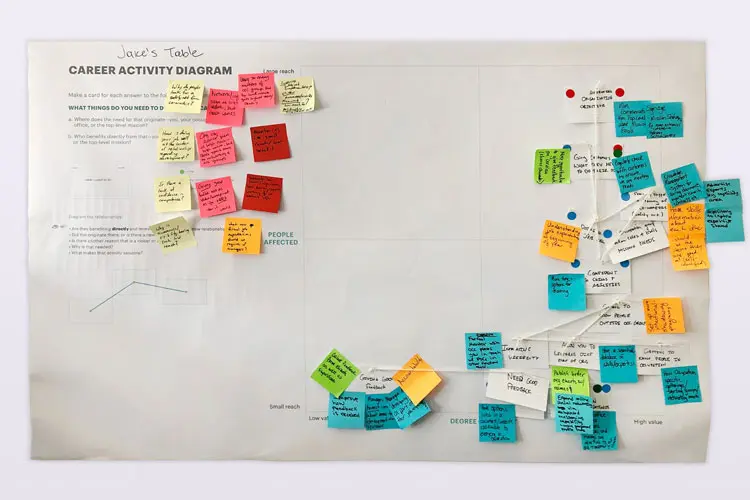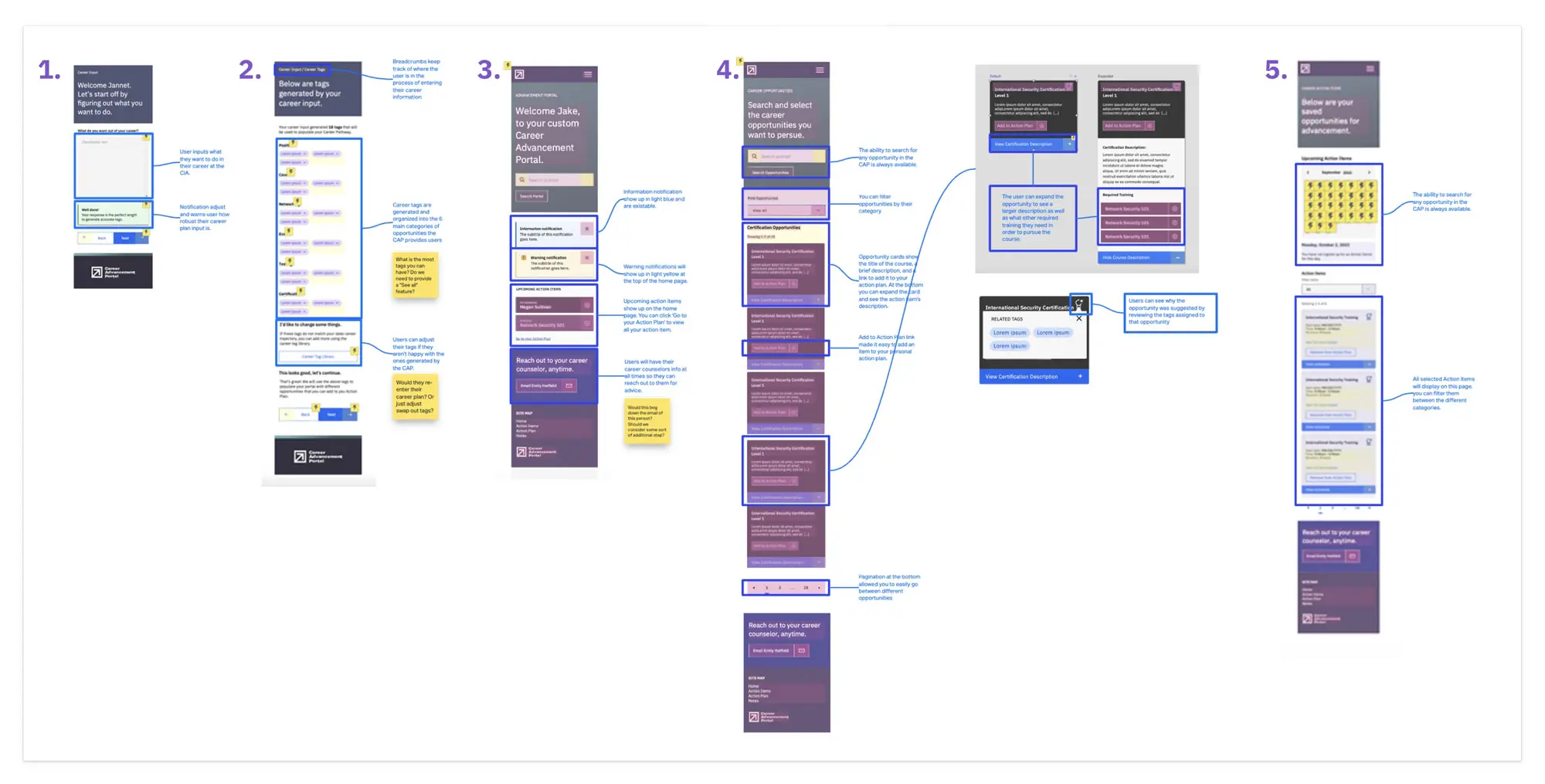Fjord was asked by I can't tell you, sorry to investigate why staff at their agency felt that their career's were stuck; employees felt like their careers were plateauing while other, less qualified coworkers, we jumping ahead. What follow was a year-long journey into the hiring, training, mentoring, and promoting process at I can't tell you..
The final concept was an application that let users piece together the necessary steps to advance and take control of their careers.
The Problem: In some government agencies, advancement and recognition is based on who you know, not what you know
The Opportunity: Our client already had all the necessary trainings, certificates, and networking opportunities; each recorded in it's own database. We just needed an application that could connect the dots.
The Solution: We created a digital prototype that uses Natural Language Processing to translate a user's goals and aspirations into existing certificates, contacts, and positions that will help them get there.

For two months, we interviewed leadership and staff, trying to better understand the career and culture at Not tellin' yah sry.
From these interviews we learned that staff felt lost in their careers and were discouraged to see less-qualified individual getting the jobs and promotions they wanted.
They desired a clear, viable way for advancement. Something that they can build a career plan from and track progress on.



In order to truly understand the career cycle within the agency, we took the feedback from our interviews and translated it into a intricate journey map..
We marked the stages of an employee's career, identified specific pain-points and blockers, measured the emotional toll of certain steps in their journey, and identified areas for improvement.

We marked the stages of an employee's career, identified specific pain-points and blockers, measured the emotional toll of certain steps in their journey, and identified areas for improvement.
What we learned is that our solution had to have three main goals....
"Dude.. seriously??" already has hundreds of courses, job openings, and certifications that agents can take, apply, and be tested on. What they don't have is a way to identify and take action on these opportunities based on their own individual goals within the agency.
Leveraging Natural Language Processing (NLP), we designed a prototype that we called the Career Action Portal. The prototype would take an employee's goal and aspirations and translate them into specific tags. These tags are also assigned to opportunities that already exist within the agency. Based on what goals you entered, the application would churn out opportunities that the user can browse and add to a career path.
This allows each user to create a tangible road map that they can save, share, and use to make progress in their careers.

Using Axure and Google Material design system ,we built a interactive prototype of this application.
In the prototype we had the user walk through the basic steps of Career Action Portal:

Axure allowed us to create and adjust interactive features quickly and easily share with our clients and test-users.
To bring the idea to life, I put together a logo and basic design guidelines for the Career Action Portal.
I wanted the logo to be simple, direct, and symbolize progress, so I included an upward arrow.
